
6 Reasons Why Order Management Doesn’t Deliver the Results You Need
Tethered to their smartphone and used to same-day deliveries from e-commerce giants like Amazon or Walmart, both today’s consumers and business buyers have higher expectations than ever when it comes to their buying experience. One late delivery alone can be the tipping point between a returning customer and one that will shop elsewhere.
To not only win customer’s hearts and wallets but to keep them for the long haul, both B2C and B2B companies need to deliver frictionless experiences in sales, e-commerce, and customer service. Every single time.
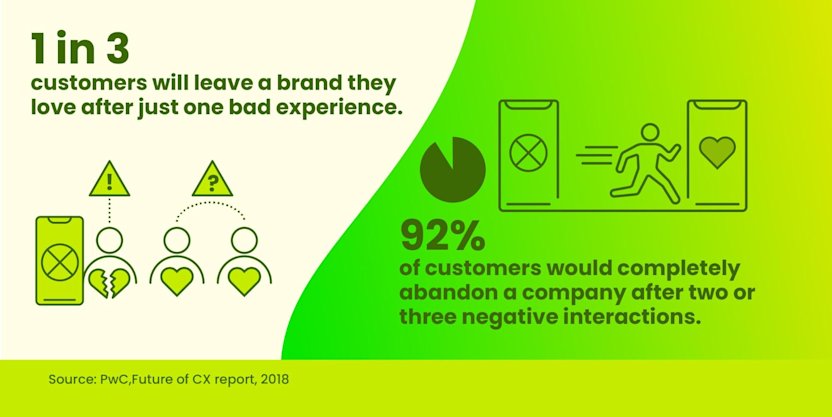
And it all starts in Order Management.
As the first leg of the Order-to-Cash process, Order Management is a critical step in driving revenue and customer value, especially for companies in the manufacturing, hardware, and chemicals industries. But all too often, highly-manual processes, cross-functional silos, and inaccurate data slow you down.
That’s why we’ve drilled into 6 most common challenges we see in Order Management and the misconceptions coming along with them, why they happen, and most importantly, how you can fix them.
1. Ensuring On-Time Delivery — with the wrong metrics
There’s no KPI that can give you a clearer picture of how well you execute your Order-to-Cash process than on-time delivery. What is On-Time Delivery? On-time delivery (OTD for short) keeps customers happy by meeting promised commitments, ship dates, and delivery dates. OTD drives customer satisfaction, ensures customer loyalty, and to a large extent also revenue. (Learn about how you can improve on-time delivery.) But there’s a common German saying: The only statistics you can trust are those you falsified yourself.
The misconception about OTD
The problem with OTD is that there’s no standard definition for how to calculate it, which means people can play games with it. For decades, companies have relied on the confirmed on-time delivery rate (short COTD), rather than prioritizing the requested on-time delivery rate (ROTD). Simply because it was “the easy thing to do”. In theory, you could push the COTD out for weeks — and still pat yourself on the back for fulfilling it. Your customers, on the other hand, would still be less than happy with your service. But in a world where even B2B companies offer same-day deliveries, you need to rethink how you measure success. Yes, setting the right expectations with customers is important. But delivering fast and in-full is what will make them stick with you for the long haul.
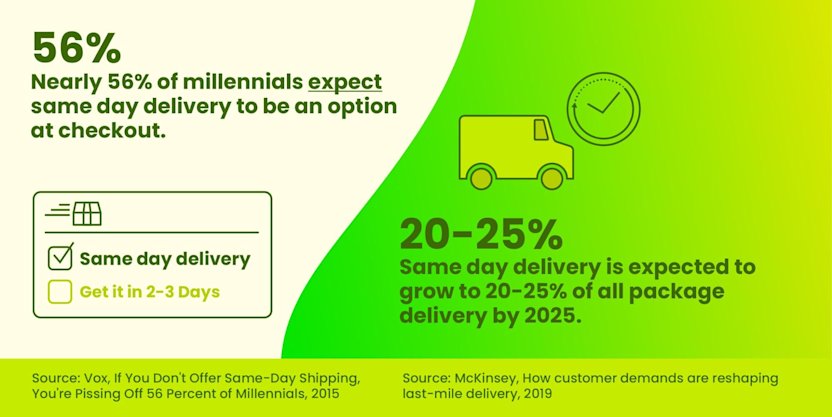
Why you should put your customers first
Just look at Amazon. By promising one-day deliveries at no additional cost, they got 112 million (!) customers in the US alone to pay a subscription fee for Amazon Prime. A business decision that pays off in multiple ways. Not only do Prime members spend more (on average, they spend $1,400 a year with the company, compared to the $600 spent by non-members), they’re also incredibly loyal: According to CIRP, 93% of consumers continue to pay after one year, 98% stay signed up after they’ve been Prime members for two years. This kind of customer experience has long made its way into the B2B sales space. And if vendors want to keep their customers from going to competitors, they need to offer a fast, digital, and flawless purchasing journey that reduces the sales cycle from a weeks-long process down to a few days.
2. Order Management has an image problem — that costs you money
Order Management has a huge impact on customer experience. And yet, it has an image problem: It’s overlooked as a driver of value and a source of savings. As supply chain leaders are bogged down with strategic supply chain issues, such as optimizing for working capital, revenue at risk, or profitability, they often don’t see Order Management as a strategic function. As a result, Order Management’s contribution to customer experience, retention, and revenue goes largely unrecognized. Partially, the problem lies in Order Management itself. Workflows are neither efficient nor focused on the business outcomes the company is aiming for. Instead of seeing the bigger picture, the main priority is processing orders as fast as possible. If your team processes orders on a first-come-first-serve base, you’ll know what we mean. But how can you be a great partner to customers and Supply Chain, if your operations are not serving their needs?
3. Order Management gets lost in the middle — when it should be viewed in the big picture
Sitting at the intersection of many departments — including finance, supply chain, sales, and customer service — Order Management often gets lost in the middle. Although Order Management is measured on customer satisfaction and on-time delivery, they have little chance to influence those KPIs from beginning to end. Material shortages, long production times, shipping delays,… all those roadblocks happen at other stages of the process and are simply out of your hands.
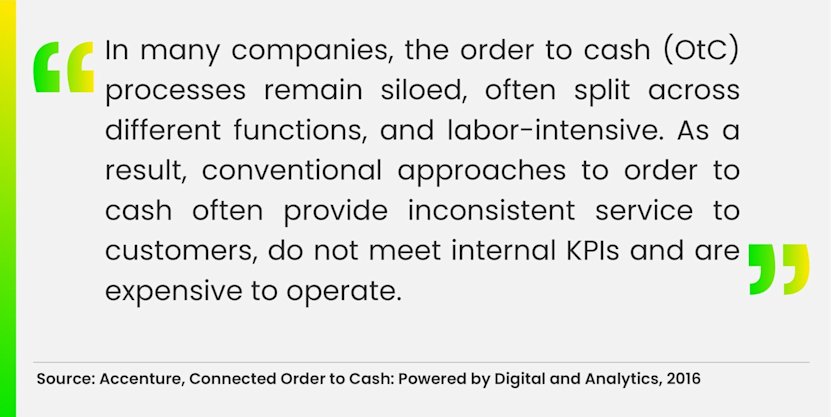
What you need is a holistic, data-driven approach. Only if you see the Order-to-Cash process end to end, can you solve process friction like low on-time delivery, high process costs, or low customer satisfaction.
4. Order management is error-prone — because speed is prioritized over accuracy
Commerce is moving faster than ever. Orders are now expected to be processed in hours or minutes, not days or weeks. But working faster isn’t always better. If your people make mistakes in processing the order or deploy short-cuts, you’ll likely struggle with negative effects further downstream.
Imagine you're the director of Order Management or Customer Service, struggling with thousands of orders being on hold each month. The next logical step for your team would be to review them — but the information they need is scattered across different systems. Now, do you manually review each order, torpedoing your on-time delivery rates? Or do you release them unaudited? If speed is the goal, releasing them unaudited sounds like the way to go. The only issue: If those unaudited orders are erroneous, your colleagues in Accounts Receivable will end up with hundreds if not thousands of orders being short-paid. And this can easily sum up to hundreds of thousands of dollars in lost cash each year. There has to be a better way.
But how can you expect to deliver outstanding results, if you prioritize speed over accuracy?
5. High manual efforts — and automating at the wrong places
Order Management has a bad reputation of being a cost center. The symptoms? Your clerks get slowed down waiting on information, actions, or updates from Finance, Inventory, or Sales. They grapple with unnecessary credit checks, order holds, and order rejections. To save time, money, and valuable resources, many companies are focused on streamlining and automating order management as much as possible. And yes, you should streamline your process, leverage automation, and reduce the manual effort of your teams to the minimum.
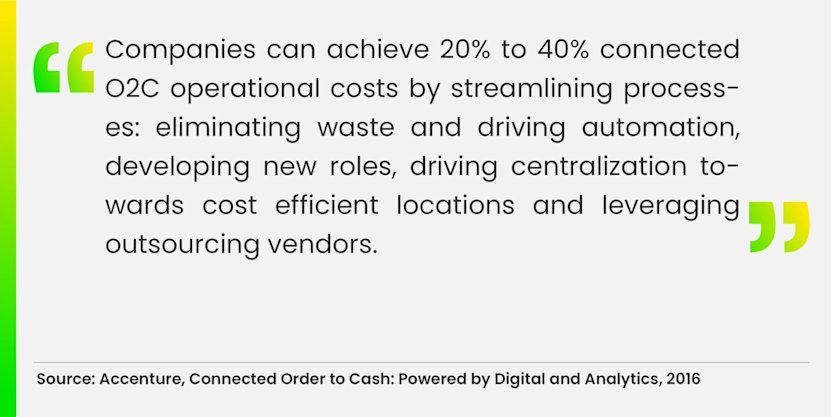
But many leaders have come to realize that bots alone can’t do the job. In the worst case, a hastily automated process can have a downstream effect that’s far more costly than a manual touch. For instance, if you run automated credit checks on every single customer, you’ll simply waste your time on those who are always paying on time. On the other hand, if you indiscriminately remove credit checks for all of your customers, you might increase On-time delivery, but ending up selling to some customers who can’t pay. In both scenarios, instead of making your process more efficient, you just accelerated a negative outcome — and severely harmed your revenue. The challenge is removing, automating, or expediting these steps without sacrificing other outcomes. What you need is an intelligent technology to identify which steps in your order management are worth automating, intelligently trigger those automations, and monitor the effect on your KPIs. Take a page from Siemens’ playbook: By identifying the best opportunities for automation within Order Management, they removed 10M manual activities and saved $15M in order processing costs.
6. Getting customer communication right — it's all about the experience
Today, consumers and business buyers alike don’t only want their products fast, on-time and in-full. They want to shop at a brand they trust, that puts their unique needs first, and that keeps up to its promises. In fact, recent customer surveys show that the experience a company provides is what stands out in customers’ minds when it’s time to swipe their credit card.
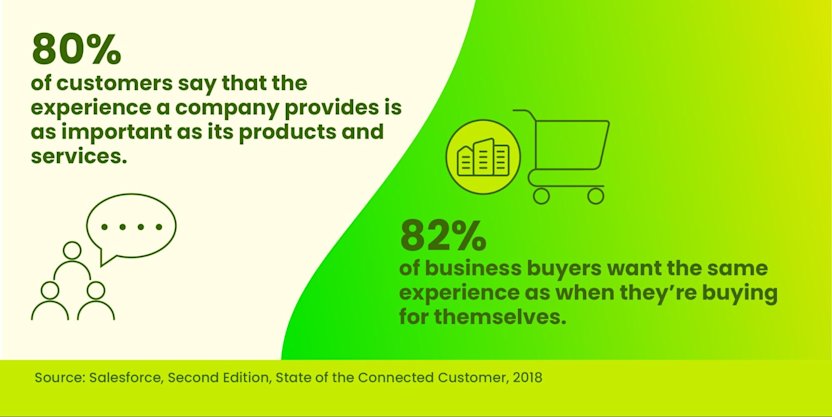
But all too often, order managers think their job is done as soon as they’ve pushed the order along to Fulfillment. Wrong. Since Order Management is the initial contact with a potential life-long customer, you need to ensure high-quality service from beginning to end: from the moment they place an order until they hold your product in their hands. If you lose them anywhere along the journey, chances are they won’t be back. So what can you do? Show them you care. Be proactive in your communication. Follow up with order confirmation, dispatch and tracking information emails to keep customers as informed as possible. Update your customers when their order is going to take longer than expected. And finally, reach out to them after the delivery to ask if there were any problems. Incorporating proactive communication into your business is a surefire way to increase customer satisfaction, nurture loyalty, and build trust – and keep them coming back over and over again.
The good news: solutions for these Order Management problems exist
To deliver exceptional customer experience in every interaction, the world’s leading companies have started to rethink their Order-to-Cash process. They’ve realized they need an innovative, holistic and connected solution to improve their process at every step of the way. And they’ve implemented smart technologies to tackle inefficiencies in real time.
We’re seeing sophisticated companies use a combination of powerful Process Mining, artificial intelligence and judicious automation to unlock new value in Order Management beyond cost saving generated from automating order processing steps.
The result: An Order-to-Cash process in harmony where every department involved works in close collaboration towards a shared goal. And an Order Management function that proves itself to be far more than a cost center — by boosting strategic outcomes like on-time delivery, productivity, and customer satisfaction.
Want to learn more about how AI-enhanced Process Mining can help in Order Management? See how companies like Siemens, ABB, and Schukat gained transparency and control over their end-to-end supply chain, increased On-time delivery, and improved customer satisfaction with Celonis.

